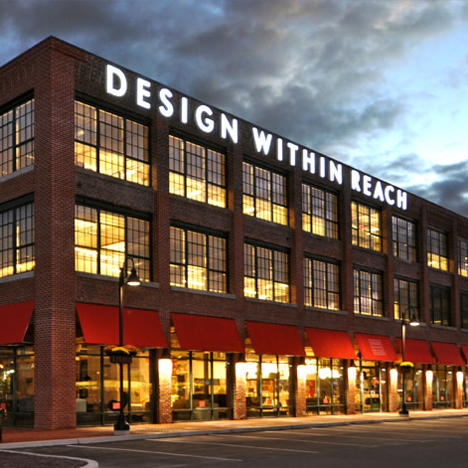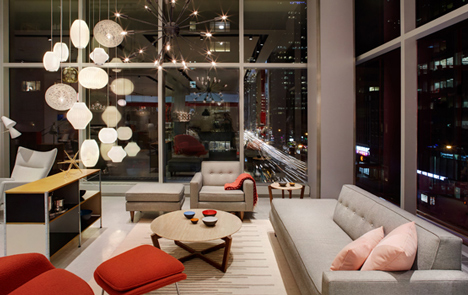
Herman Miller to buy contemporary furniture retailer Design Within Reach
News: American furniture manufacturer Herman Miller has announced plans to buy contemporary furniture retailer Design Within Reach as part of its ongoing efforts to become "a premier lifestyle brand".
In an official statement Herman Miller said it would acquire approximately 84 per cent of Design Within Reach (DWR) for $154 million (£90.1 million) in cash.
The furniture brand said that DWR had become "the largest and fastest growing retailer of Herman Miller's furniture designs" and would be a key part of the company's strategy to diversify beyond manufacturing.
"The addition of DWR is a transformational step forward in realising our strategy for diversified growth and establishing Herman Miller as a premier lifestyle brand," said Brian Walker, Herman Miller's chief executive officer.

The purchase will result in the creation of a new consumer arm for Herman Miller, while DWR will continue to operate as a retail business led by current CEO John Edelman and president John McPhee.
"In addition to enhancing Herman Miller's brand visibility, we gain access to DWR's growing and exclusive product portfolio and proven development capabilities," said Walker. "We are acquiring a complete consumer-focused infrastructure and an experienced and committed leadership team and workforce that truly values Herman Miller’s design legacy. That leadership team will skillfully advance our consumer business while DWR gains new resources to further their growth plans."
DWR was founded in 1998 by Rob Forbes, who wanted to create a shop that made the furniture by Modern designers that he had been able to find in Europe accessible to US customers without having to wait months for delivery.
It has since become one of North America's biggest retailers of furniture by named designers and design-led brands, with 38 shops around the US and Canada and large e-commerce and mail-order operations.

Herman Miller began its evolution into a major design brand under architect George Nelson, who was appointed its director of design in 1945 and brought in a series of creatives including Charles and Ray Eames. The Eames would go on to design most of the Michigan-based company's furniture during Nelson's tenure.
The brand still owns the license to the Eames' furniture designs, which have experienced a revival in popularity as mid-century Modernism becomes more in demand among collectors. But it has also been investing heavily in new areas of business as part of an attempt to become a one-stop-shop for Modern furniture and lifestyle products.
Last year, the company agreed to acquire New York-based textile manufacturer Maharam – who produced many of the fabric designs used to cover pieces created for Herman Miller by designers including Hella Jongerius and Tord Boontje, as well as Nelson and the Eames' – in a deal worth an estimated £101 million.
In June this year, the furniture manufacturer announced it had gone into production with two new flexible office collections designed by Yves Behar's studio Fuseproject and London company Industrial Facility.

But in that same month, The Wall Street Journal reported that Herman Miller had experienced a 29 per cent profit drop at the end of 2013. Walker warned that the acquisition of DWR was a long-term strategic decision, but the costs involved would result in "modest" company profits for the financial year. Last year the company turned over an estimated $1.9 billion.
The brand's acquisition of DWR is the latest in a string of major purchases that have created a wider consolidation within the furniture industry.
In February, American office furniture giant Haworth bought a majority stake in iconic Italian design brands including Cappellini, Cassina and Alias as part of its $270 million deal with Italian furniture group Poltrona Frau.
In September last year, Swiss design brand Vitra acquired Artek, the Finnish furniture company co-founded by Modernist architect Alvar Aalto in 1935.
And last month online retailer Fab bought design-led manufacturer One Nordic, launching a new design brand called Hem as part of its shifting strategy to bring more production in house.